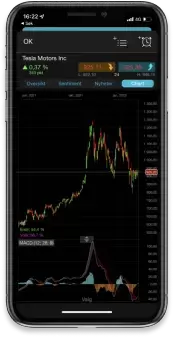The recent weakness in the pound has been a little inexplicable given some of the recent data, and the prospect that the Bank of England’s next move on monetary policy is more likely towards a tightening of monetary policy than an easing.
Unemployment is continuing to come down, inflation is expected to continue to push higher in the coming months, and there appears to be plenty of job vacancies available as the economy reopens. Of course, there are headwinds and the UK is definitely caught in the cross current of risks that have been blowing through global markets this week, which has contrived to send stocks sharply lower.
These cross currents saw markets in Europe slide back sharply yesterday, with several factors driving the weakness. Starting with increasing concerns over a slowing global economy, prompting a fall in basic resources, there was also increasing angst over rising infection rates and vaccine durability. We also had to contend with China looking to pour sand in the wheels of its own recovery story with a crackdown on various sectors including tech and luxury.
With bond yields falling, the US 10-year has fallen 12bps since last Thursday, the story markets appear to be telling us is they aren’t concerned about a Fed taper, but are concerned about a slowing global recovery story. There is also a fear that some governments, in looking to pursue a zero covid strategy do more harm than good in trying to deal with a genie that is already out of the bottle, so to speak.
US markets appear to have set aside some of these concerns; however, they aren’t as exposed to a China slowdown story as European markets are, and while we saw the S&P 500 and Nasdaq rebound and finish higher, as yields slipped back, it was rather telling that the Russell 2000 slid back sharply, closing below its 200 day MA.
Today’s European market open looks set to be a slightly negative one as Asia markets continue the weakness of the last 24 hours with Japanese automakers getting clobbered on the back of Toyota’s decision to cut car production in September.
As we look to today’s European session we’ll also get the opportunity to run the rule over the UK economy with the latest retail sales numbers and public finance data for July. We did see slightly softer inflation pressures during the month of July as the UK economy finally saw the lifting of all restrictions, a measure that was delayed from June, so there could be a little bit of a pop from that, as nightclubs and cinemas reopened fully.
We got a slightly better feel for consumer spending in June, with a rise of 0.5%, after a sharp -1.3% decline in May, while other retail sales surveys pointed to resilience in patches and weakness in other areas. The corresponding BRC retail surveys sometimes give a fairly good correlation, although sometimes they can and do diverge. In June, according to the BRC survey, UK retail had its best quarter on record with spending rising by 13.1% against a decline of 1.9% in June 2019.
With the school holidays starting in July and people being encouraged to holiday at home, the delay in lifting travel restrictions could also act as a boost as more people book a domestic break instead, and this could offer a boost. Expectations are for a modest rise of 0.2% in July.
We also have the latest public finances data for July and here we could see a significant improvement given that fewer people are on furlough, while those that are still on furlough now only get 70% of their salary paid by the government, with that coming down to 60% in August. This change is expected to see borrowing fall from the £22bn we saw in June, to half that amount in July, at £11bn.
EUR/USD – continues to look soft with the potential for a move towards the 1.1600 level and last November’s lows. The 1.1720 level should now act as resistance, with a break above here retargeting the 1.1830 area.
GBP/USD – we look to be heading back to the July lows at 1.3570, after breaking below the 1.3670 area yesterday. We now have resistance at the 1.3725 level, which was 61.8% retrace of the 1.3570/1.3985 up move.
EUR/GBP – further weakness in the pound has seen us edge higher towards the 0.8580 area. We now have support back at the 0.8530 area as well as the 0.8500 level.
USD/JPY – having failed at the 110.80 level we’ve found some support at the 109.10 area, which has seen us move back to the 110.20 area. While below 110.20, risk is for a move back to the lows of this week.
FTSE 100 is expected to open 8 points higher at 7,067
DAX is expected to open 24 points lower at 15,741
CAC 40 is expected to open 8 points lower at 6,598
Disclaimer: CMC Markets is an execution-only service provider. The material (whether or not it states any opinions) is for general information purposes only, and does not take into account your personal circumstances or objectives. Nothing in this material is (or should be considered to be) financial, investment or other advice on which reliance should be placed. No opinion given in the material constitutes a recommendation by CMC Markets or the author that any particular investment, security, transaction or investment strategy is suitable for any specific person. The material has not been prepared in accordance with legal requirements designed to promote the independence of investment research. Although we are not specifically prevented from dealing before providing this material, we do not seek to take advantage of the material prior to its dissemination.







